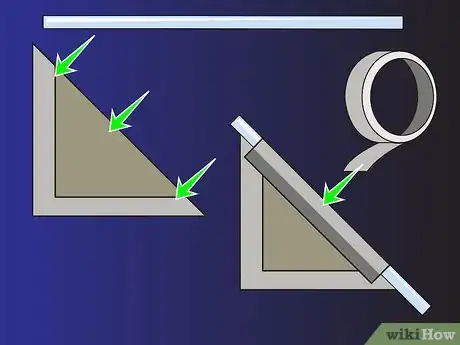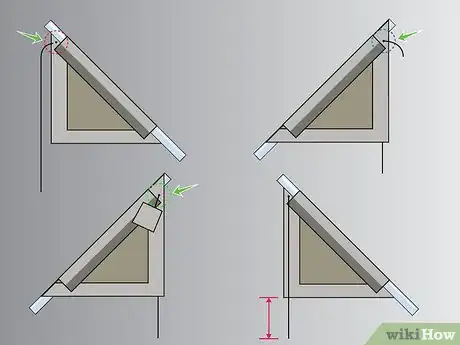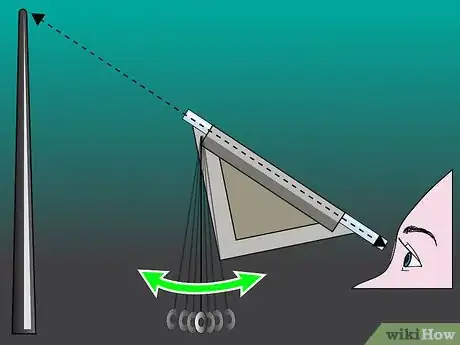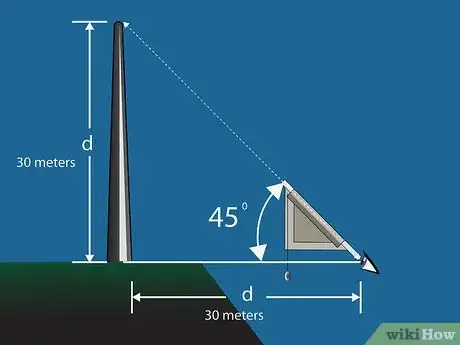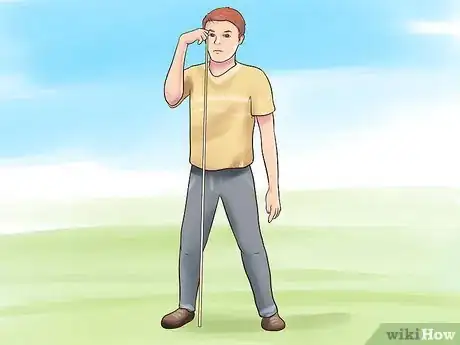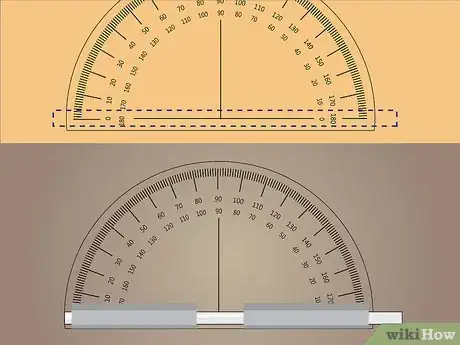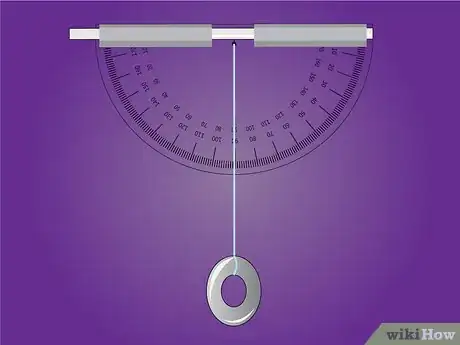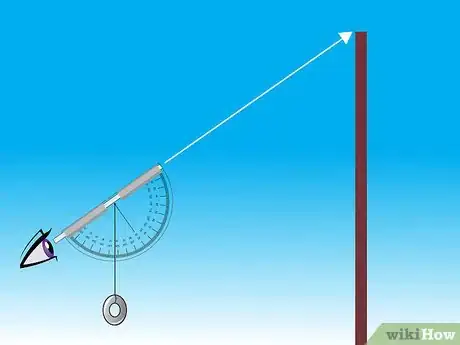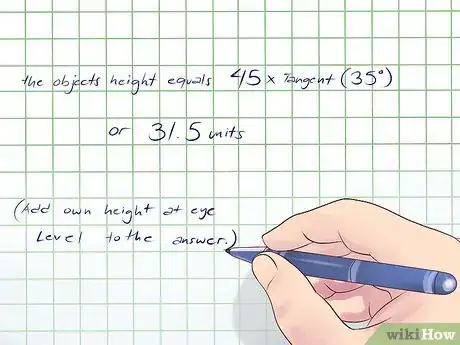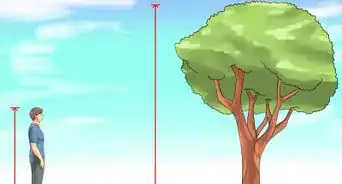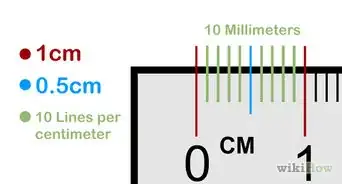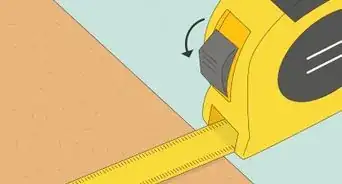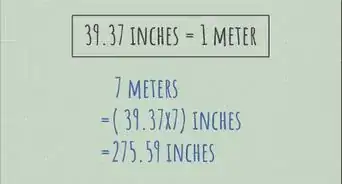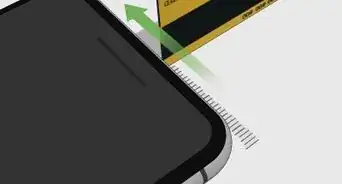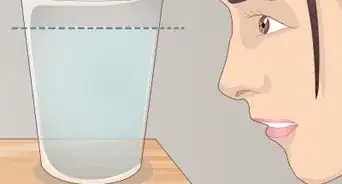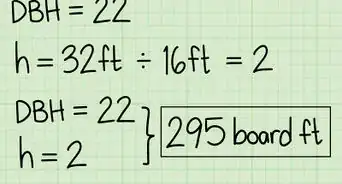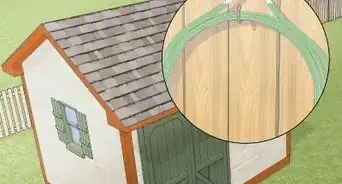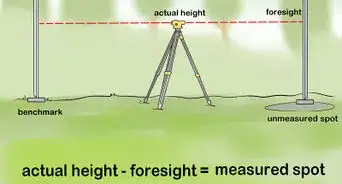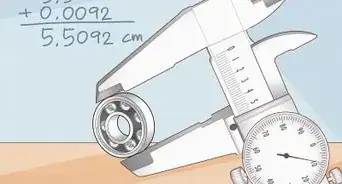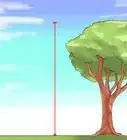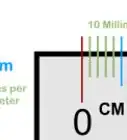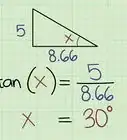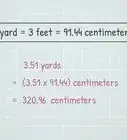This article was co-authored by Bess Ruff, MA. Bess Ruff is a Geography PhD student at Florida State University. She received her MA in Environmental Science and Management from the University of California, Santa Barbara in 2016. She has conducted survey work for marine spatial planning projects in the Caribbean and provided research support as a graduate fellow for the Sustainable Fisheries Group.
wikiHow marks an article as reader-approved once it receives enough positive feedback. This article received 29 testimonials and 84% of readers who voted found it helpful, earning it our reader-approved status.
This article has been viewed 524,377 times.
A clinometer, also called a declinometer or an inclinometer, is an instrument that measures vertical slope, usually the angle between the ground or the observer and a tall object. A simple, or fixed angle, clinometer requires plenty of room to walk back and forth when measuring an object. A protractor clinometer lets you measure while standing in place, and is an easy-to-make version of the clinometers frequently used in astronomy, surveying, engineering, and forestry.
Steps
Making a Simple Clinometer
-
1Fold an 8 by 8 in (20 by 20 cm) piece of paper into a triangle. Fold the bottom right corner over to touch the left side of the paper, lining up the sides exactly to form a triangle. If you are using an ordinary rectangular sheet of paper, there will probably be an unfolded "extra" section above this triangle. Cut or tear this section off. What you are left with is an isosceles right triangle, with one 90º angle and two 45º angles.
- Construction paper will make a more durable clinometer, but you can use any sheet of paper. You may want to tape or glue the triangle together to make it sturdier.
-
2Tape a straight drinking straw to the triangle's longest side. Position a drinking straw along the longest edge of the triangle, or hypotenuse, so that one end extends slightly out from the paper. Make sure the straw isn't bent or crushed, and runs straight along the hypotenuse. Use tape or glue to secure it to the paper. You will be looking through this straw when using the clinometer.[1]Advertisement
-
3Punch a small hole next to the end of the straw. Choose the end of the straw that is level with the corner, not the one where the straw extends beyond the paper. Use a hole punch or a sharp pen to make a hole in the triangle near this corner.[2]
-
4Attach a string through the hole. Push a string through the hole, then tie a knot or tape it to keep it from slipping back out. Use enough string that you have at least a few inches (several centimeters) dangling at the bottom of the clinometer.
-
5Tie a small weight to the bottom end of the string. Use a metal washer, a paper clip, or another small object. The weight should dangle 2 inches (5 cm) or more below the corner of the clinometer so that the string will swing freely.[3]
Using a Simple Clinometer
-
1Sight the top of a tall object through the straw. Hold the longer end of the straw next to your eye and point it at the top of a tall object you want to measure, such as a tree. Most likely, you'll have to tilt the triangle so one of the bases is parallel to the ground in order to see the top of the object you're aiming for.[4]
-
2Move forward or backward until the string lines up with the triangle. In order to measure the tree, you need to find a spot to stand where you can hold the triangle completely flat and still see the top of the object through the straw. You can tell when the triangle is flat because the weight will pull the string down exactly in line with one of the triangle's short sides.
- When this happens, it means the angle of elevation between your eye and the top of the object is 45 degrees.
- If you crouch or stand on an object to find a better position, you'll need to measure your height at eye level while in that position, instead of when standing normally as described in a later step.
-
3Use a tape measure to find the distance between this position and the base of the tall object. Just like the triangle you're holding, the giant triangle formed by you, the base of the tall object, and the top of the object has two 45º angles and one 90º angle. The two shorter sides of a 45-45-90 triangle are always the same length. Measure the distance between the position you were standing in at the end of the last step, and the base of the tall object you are measuring. The result is almost the height of the tall object, but there's one more step to get your final answer.[5]
- If you don't have a tape measure, walk normally towards the tall object and count how many steps it takes to get there. Later, when you have a ruler, measure the length of one step and multiply by the number of steps you took to find the total distance (and therefore the height of the object).
-
4Add your height at eye level to get the final answer. Because you held the clinometer at eye level, you actually measured the height of the object starting at your eye's height above the ground.[6] Use a tape measure to find out how tall you are from the ground to your eye level, add the result to the number you measured in the last step. Now you know the full height of the object!
- For example, if your eye level is 5 feet (1.5 m) and the distance between you and a tree are 45 feet (14 m), the total height of the tree is 50 feet (15 m).
Making a Protractor Clinometer
-
1Find a 180º protractor. This type of protractor is shaped like half a circle, with angles marked all around the rim. You can buy them anywhere that sells school supplies. Ideally, choose a protractor with a small hole near the center of the protractor, along its straight base.
- If you don't want to buy one, you can search online for a printable protractor. Print it out, cut it very carefully along its outline, and glue the paper protractor to something a little sturdier, such as construction paper or an index card.
-
2Tape a straw along the straight edge. Tape a straight, plastic drinking straw on or near the straight edge of the protractor. Make sure the straw passes through the two 0º or zero marks on opposite ends of the straight edge.
- If you don't have a straw, roll a piece of paper into a tight cylinder and use that instead.
-
3Tie a string through the small hole on the straight edge. Many protractors come with a small hole directly between the 0º marks on the protractor, across from the 90º mark on the curved edge of the protractor. If your protractor does not have a small hole here, or if the hole is not situated correctly, tape or glue the string to the protractor where the hole should be. Make sure the string dangles a few inches (several centimeters) below the protractor.
- If you are using a paper protractor, you can punch the hole yourself with a sharp pen or hole punch. Do not try to punch a hole in a plastic protractor, as it is probably made from weak plastic and could shatter.
-
4Attach a small weight to the dangling end of the string. Tie a paper clip, metal washer, or other small weight to the end of the string. When you hold the clinometer so the string falls past the circular rim of the protractor, the weight will pull the string straight down past an angle mark on the protractor, such as 60º. This tells you what angle the clinometer is being held at, which can be used to find the heights of distant objects as described in the section below.
Using a Protractor Clinometer
-
1Sight the top of a tall object through the straw. Hold the clinometer so the curved rim of the protractor is facing downward. Tilt the clinometer until you can look through the straw or paper tube and see the top of a tall object you want to measure, such as a building. You can use this method to measure the angle between you and the top of that object, or the object's height.
-
2Measure the angle using the protractor. Keep the clinometer steady in that position, until the dangling string becomes still. Calculate the angle between the midpoint of the protractor (90º), and the point where the string crosses the rim by subtracting one from the other. For example, if the string crosses the rim at 60º, the angle of elevation between you and the top of the object is 90–60=30º. If the string crosses the rim at 150º, the angle of elevation is 150-90=60º.
- The angle of elevation will always be less than 90º since 90º is straight up in the sky.
- The answer will always be positive (greater than 0º). If you subtract the larger number from the smaller and get a negative number, just cross out the minus sign to get the right answer. For example, if you calculate that 60-90=-30º, the actual angle of elevation is +30º.
-
3Calculate the tangent of this angle. The tangent of an angle is defined as the side of a right triangle opposite the angle, divided by the side adjacent to the angle. In this case, the triangle is formed by three points: you, the base of the object, and the top of the object. The "opposite" side from this angle is the height of the object, and the adjacent side is the distance between you and the object's base.[7]
- You can use a scientific or graphing calculator, an online tangent calculator, or a chart listing tangents for various angles.
- To calculate the tangent on a calculator, press TAN and enter the angle you found. If the answer is below 0 or above 1, set your calculator to degrees instead of radians and try again.
-
4Measure your distance from the object. If you want to find out how tall the object is, you'll need to know how far away you are from its base. Measure using a tape measure. If you don't have one, count the number of ordinary steps it takes to get to the object, then measure the length of one step once you find a ruler. The total distance is the length of one step multiplied by the number of steps you took.
- Some protractors have rulers marked along the straight edge.
-
5Use your measurements to calculate the height of the object. Remember, the tangent of your angle is (object's height) / (distance between you and the object). Multiply the tangent by the distance you measured, and you'll be left with just the object's height!
- For example, if the angle of elevation was 35º, and your distance from the object was 45 units, the object's height equals 45 x tangent(35º), or 31.5 units.
- Add your own height at eye level to your answer, since that's how far your clinometer was above the ground.
Community Q&A
-
QuestionWhy was the clinometer invented?
 Community AnswerThe clinometer, also known as an inclinometer or a gravity inclinometer, was invented by William B. Melick in 1889. It was invented to measure the gradient of a slope and the height of objects like trees.
Community AnswerThe clinometer, also known as an inclinometer or a gravity inclinometer, was invented by William B. Melick in 1889. It was invented to measure the gradient of a slope and the height of objects like trees. -
QuestionWhich type of clinometer is easier to make?
 Community AnswerBoth of them are easy. But I think it is easier with the protractor. I made the one with the protractor and it was very accurate.
Community AnswerBoth of them are easy. But I think it is easier with the protractor. I made the one with the protractor and it was very accurate. -
QuestionCan I use two straws?
 Le_VictorianCommunity AnswerAll clinometers of this kind use one straw or sighting tube; there is no need for another straw or sighting tube, but some azimuth measuring instruments do use two sights so you can take two measures at one time (geodetic repeating circles). But they are for azimuth (left and right), they are therefore not a clinometer that measures elevation.
Le_VictorianCommunity AnswerAll clinometers of this kind use one straw or sighting tube; there is no need for another straw or sighting tube, but some azimuth measuring instruments do use two sights so you can take two measures at one time (geodetic repeating circles). But they are for azimuth (left and right), they are therefore not a clinometer that measures elevation.
Warnings
- A homemade clinometer is not usually used for highly precise work, such as surveying. For those tasks, use an electronic clinometer.⧼thumbs_response⧽
- If the ground at the base of the object you are sighting is on a different level than the ground you are standing on, you may not get an accurate result. Try to measure or estimate the difference in heights to add or subtract to your result.⧼thumbs_response⧽
- Do not attempt to sight the sun with the clinometer, doing so may damage your eyes.⧼thumbs_response⧽
Things You'll Need
- Paper (Or Protractor)
- Straw or hollow iron material
- String
- Washer or fishing weight
References
About This Article
1. Fold a square piece of paper into a triangle.
2. Position a drinking straws so that one end is level with the corner and one end extends past it.
3. Attach the straw to the paper with tape or glue.
4. Punch a small hole next to the end of the straw that’s level with the paper.
5. Tie a string around the hole.
6. Tape a paper clip to the bottom of the string so that it’s dangling 2 inches below the corner of the triangle.

